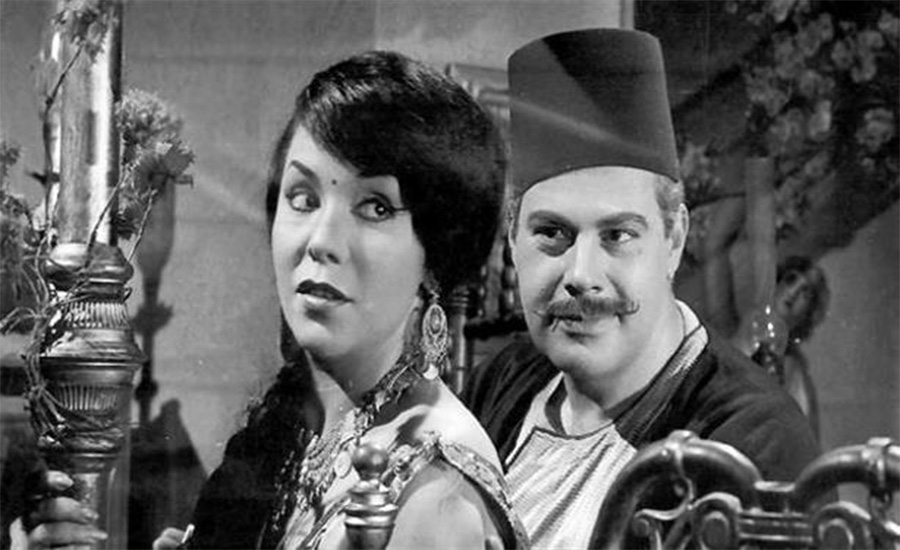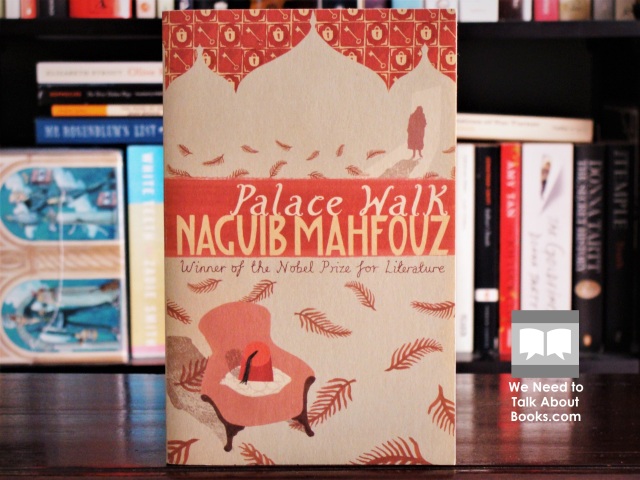
Si El-Sayed throws open the doors to his home. Amina welcomes him with unconditional servitude; she is the picture of a diligent wife—and he, the tyrannical, seldom-smiling despot. The streetlight creates a cast between them, a power imbalance that colors their curt, one-sided conversation. Amina scuttles off to prepare a midnight meal, and Si El-Sayed watches her leave.
He smells of rum and women’s perfume; he has just returned from the cabaret.
Nobel prize laureate Naguib Mahfouz brought Si El-Sayed to life in his Bayn al-Qasryen (Palace Walk, 1956): the first installment of a trilogy that picked apart the sociopolitical debris of Egypt’s 20th century. From unchecked hope and revolution to tragedy and hypocrisy, The Cairo Trilogy (1956-1957) did more than describe modern Egypt—it defined its parameters and critiqued its major players.
Nothing was sacred to Mahfouz; archaic culture was examined, exhumed, and politics admonished.


Born from the residue of Egypt’s patriarchy was Bayn al-Qasryen’s anti-hero: Si El-Sayed. At its most elemental, the name is a deriding anagram with Si meaning sir, and El-Sayed being a common Egyptian name translating to glorious/revered among men or master. In essence, Mahfouz’s Si El-Sayed was Mr. Man: an individual who demanded glory and reverence simply for being the father of the house. Si El-Sayed embodied the hypocrisies and injustices of patriarchal Egypt, domesticating them into a single household.
From beating his wife into submission to drinking his nights away with other women, Si El-Sayed was crafted as a candid critique of 20th century Egypt’s imbalanced social norms—an ironic, bitter representation of what was lauded as the ideal man. The era was strung with toxic expressions of masculinity, with entire generations believing that in order to be respected absolutely, one must also be feared absolutely.
Academic Salma Abdelsalam describes Si El-Sayed as more than a father, but a god-like decision-maker. This was a “chauvinistic, all-controlling male whose words cannot be disputed.”

Though over the years, what was once meant to be a caricature of hypocrisy, became a symbol of Egyptian masculinity. Singer-songwriter Tamer Hosni dubbed himself Si El-Sayed in a 2013 release alongside Snoop Dogg, not only glorifying the role of vitriolic hypermasculinity, but embodying it himself in a postmodern Egypt with lyrics such as: “These words are for you and for any woman who tries to cancel the difference between a man and woman; there is more than one difference.”
Actress and singer Donia Samir Ghanem followed suit, perhaps even more damningly, with lyrics proclaiming:
“I wear what he wants me to wear, I follow his rules word for word. He has complete control over my life, he is the only man I speak to; he even picks my girlfriends.”
It seems that Si El-Sayed continues to live in some capacity in the Egyptian mind, for better or worse. While many have admonished the glorification of this archetype, others continue to live in its shadow, be it because of socioeconomic cavities, a dated vision of femininity, or a misguided attempt at masculinity.
The true Si El-Sayed, however, lives on in Mahfouz’s writings as the villain of his own family—a villain of his own making.







Comments (2)
[…] كيف أصبح سي السيد لمحفوظ مقياسًا للرجولة المصرية […]
[…] كيف أصبح سي السيد لمحفوظ مقياسًا للرجولة المصرية […]